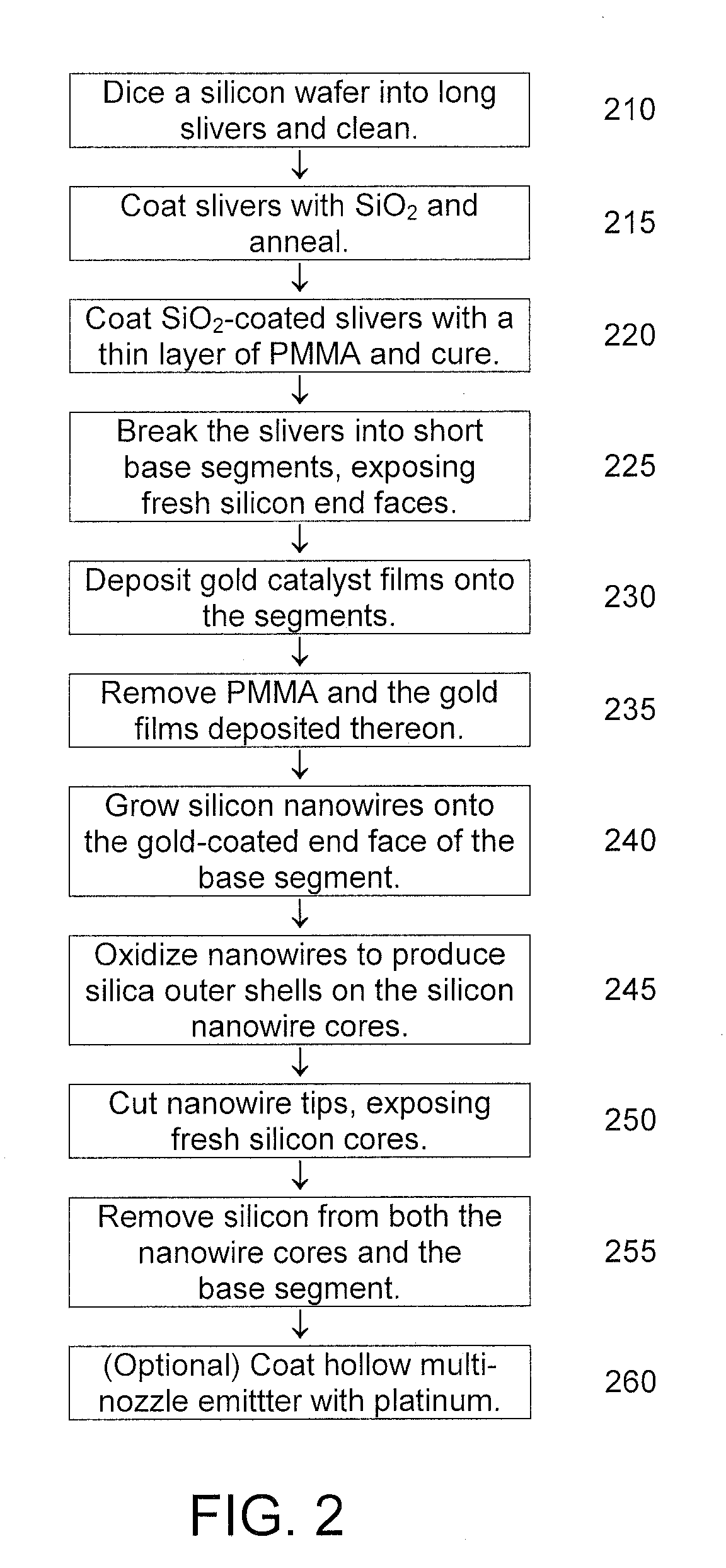Monolithic Multinozzle Emitters for Nanoelectrospray Mass Spectrometry
a multi-nozzle, nanoelectrospray technology, applied in the direction of boring tools, isotope separation, particle separator tubes, etc., can solve the problems of large opportunities and challenges in mass spectrometry, sensitivity and dynamic range have not been sufficient for all analyses, and it is difficult to detect many of the less abundant proteins
- Summary
- Abstract
- Description
- Claims
- Application Information
AI Technical Summary
Benefits of technology
Problems solved by technology
Method used
Image
Examples
Embodiment Construction
[0012]The embodiments of the invention are illustrated in the context of nanoelectrospray emitters for mass spectrometry. The skilled artisan will readily appreciate, however, that the materials and methods disclosed herein will have application in a number of other contexts where very small droplet size and very slow fluid flow rates are desirable.
[0013]The terms “nozzle,”“capillary,” and “tubule” are used interchangeably in this disclosure to mean a very thin tube out of which an analyte solution can flow and form small droplets. The term “emitter” is used to mean the assembly that includes both the nozzle(s) and a base chamber or tube that supplies an analyte solution to the nozzle(s). In the case of a single nozzle, the terms “emitter” and “nozzle” can refer to the same structure as there is a one-to-one correspondence between the nozzle and its base chamber; the base chamber can be thought of as a simple extension of the nozzle. The term “trench” is used to mean a groove or dit...
PUM
| Property | Measurement | Unit |
|---|---|---|
| droplet diameters | aaaaa | aaaaa |
| droplet diameters | aaaaa | aaaaa |
| flow rates | aaaaa | aaaaa |
Abstract
Description
Claims
Application Information
 Login to View More
Login to View More - R&D
- Intellectual Property
- Life Sciences
- Materials
- Tech Scout
- Unparalleled Data Quality
- Higher Quality Content
- 60% Fewer Hallucinations
Browse by: Latest US Patents, China's latest patents, Technical Efficacy Thesaurus, Application Domain, Technology Topic, Popular Technical Reports.
© 2025 PatSnap. All rights reserved.Legal|Privacy policy|Modern Slavery Act Transparency Statement|Sitemap|About US| Contact US: help@patsnap.com



